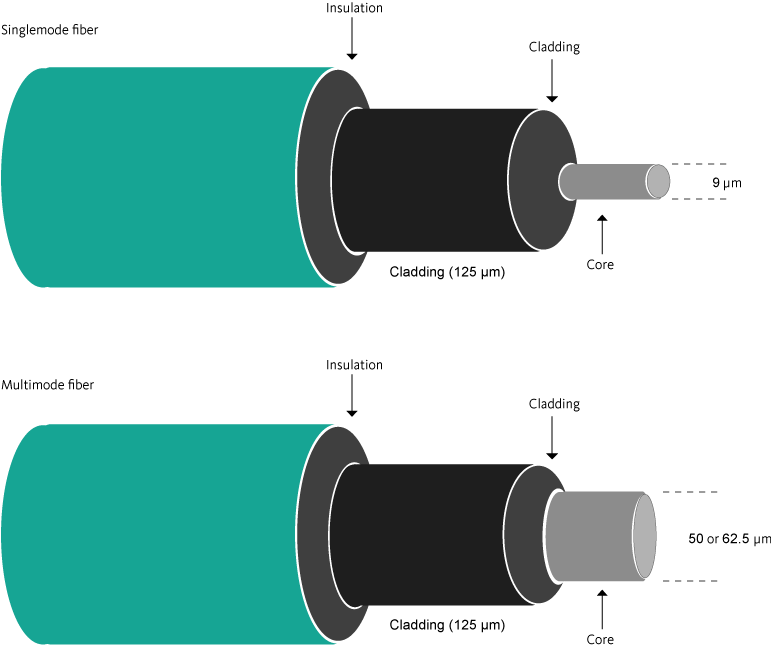Fiber: What are the Different Types of Fiber Optic Cables?
Published by Cablesys on Apr 5th 2018
When there is a need to transfer big data, fiber optic cables are an optimal solution, whether it's installing a small network or setting up a data center for a high-capacity/high-volume networking. Finding the right cable can be challenging due to the different fiber optic cable types available. Understanding the purpose behind the different types can help in system performance. Here are examples of what the different types of fiber optic cables are.
What Is Fiber Optic Cable?
All fiber optic cable types are comprised of a core that transmits light, generally either glass or plastic, a cladding which reflects that light to prevent loss, and surrounded by sheathing meant to protect the core and cladding from damage. The thickness of these layers can vary, depending on where the cable will be placed and what kind of performance is needed. So, what are the different types of fiber optic cables?

Single-mode
SIngle-mode fiber optic cable excels at long-distance communication. Single-mode cable is designed to carry a single signal source with low transmission loss over great distances. It is frequently used for communication systems due to the clarity it provides. This type of fiber optic cable has the smallest core and the thickest sheathing.

Multimode
Multimode cables are designed to carry multiple signals, however, this capacity comes with a loss of range. Multimode cables come in two primary varieties. What are the different types of multimode fiber optic cables? Your choices are step index or graded index cables.
Step index multimode cables have a thick core through which signals are fed. They work well over moderate distances and can offer longer range communication potential with the use of amplifiers. The various light signals enter at different angles, transmitting at different rates through the cable.

Graded index multimode cables have a core arranged in concentric circles, like the cross section of a tree. As light enters, it is transmitted through the rings with the outer rings travelling faster than transmissions in the central core. This type of cable can handle many wavelengths of light at once, making it perfect for clear communication and data transfer requiring up to 100Gb transfer rate, as you would find at a large data center.

Selecting the Proper Cables for Each Installation/Project
Understanding what the different types of fiber optic cables are is outlined. The next step is to choose the right fiber optic cable. Cablesys offers data center grade cabling and accessories.
